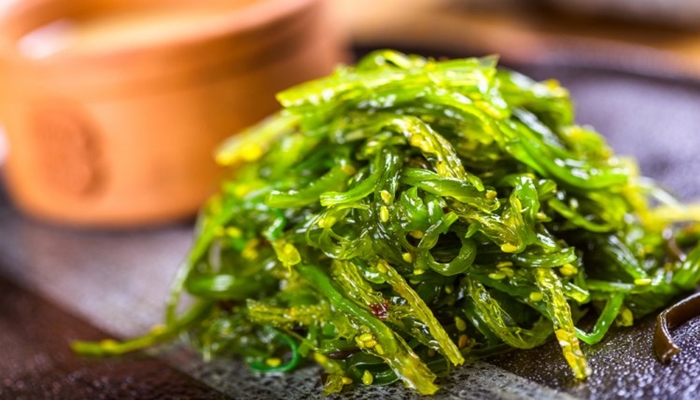Seaweed - A valuable source of nutrients from the ocean
Seaweed is a form of algae that lives in the sea. This is a food source for marine life and for humans; Seaweed varies in color from red, green to dark brown. Seaweed live and distribute along the coasts of the world, but they are only used as ingredients to make popular dishes in countries such as Korea, Japan, and China.
Although seaweed has many types, varying in shape and color, they have one thing in common: they bring great nutritional value to human health.
1. Benefits of seaweed for health
a) Helps support weight loss
Seaweed contains alginate – a polysaccharide widely distributed in the cell walls of algae; Helps block enzymes that digest fat, which in turn can prevent obesity and aid in weight loss.
Besides, fucoxanthin - a kind of natural active ingredient helps to inhibit the accumulation of belly fat and reduce the accumulation of fat in the liver. Fucoxanthin also has an effect on leptin in the body (a hormone necessary for hunger control).

b) Enhance heart health
Seaweed contains many nutrients beneficial to the cardiovascular system such as Omega-3 fatty acids, soluble fiber… In addition, they also help control triglyceride and cholesterol levels in the body. This helps protect a healthy heart, promotes good blood circulation in the arteries, reduces the risk of atherosclerosis, heart failure, high blood pressure or some other dangerous diseases.

c) Stabilize blood sugar
Certain compounds found in seaweed are thought to help stabilize blood sugar levels. Among them, fucoxanthin is an antioxidant that can increase insulin sensitivity and blood sugar control. Fiber also significantly slows down the rate at which carbohydrates in food are absorbed through the intestinal wall. This helps to prevent type 2 diabetes effectively.

d) Improve skin health
Regular consumption of seaweed helps to supplement peptides - this is a short amino acid chain that has the ability to increase production and profoundly affect collagen regeneration to help slow down the aging process, smooth wrinkles, increase strength. skin elasticity and moisture.
2. Popular types of seaweed today
a) Laver seaweed Nori
This is a type of seaweed with a Japanese name, the most commonly used of all seaweeds. Nori seaweed has a thin, paper-like shape, dark green color, often used to wrap sushi or kimbap.
 b) Kombu Seaweed
b) Kombu Seaweed
Usually sold in convenience stores as a dry, dark green color, cut into small squares and has a white powdery coating on the surface.
Kombu seaweed has a mild salty and sweet taste thanks to glutamic acid, so it is often used to cook broths, cook with bean dishes or make salads.

c) Wakame
Wakame (or Undaria pinnatifida) belongs to the brown algae family, is a bright green seaweed with a characteristic flavor. This type of seaweed can be eaten alone or used in some dishes such as salads, soups, soups or stir-fries, etc.

d) Hijiki
This algae has a characteristic black filament form. Hijiki seaweed is rich in calcium, iron and fiber and contains fucoidan. Fucoidan is an antioxidant, prevents cancer, strengthens the immune system, lowers cholesterol, is good for the heart and digestive system. Hijiki seaweed is often dried before being sold and used in stir-fries, soups, rice balls, salads, etc.












